Hannibal’s great victory at Cannae in 216 BC is famous as a decisive victory by double envelopment. After baiting a much larger Roman army into an attack, he trapped it between the jaws of his wings, which then encircled and annihilated the Romans.
But on closer examination, this traditional account of Cannae doesn’t quite add up. How did Hannibal manage to surround such a large army in the first place? Why didn’t the Romans just roll through his entire line, and surround him? A few modern narratives hint at an explanation, but never quite spell it out.
By early 216, Hannibal had been rampaging around Italy for the past year and a half, and had inflicted a number of severe defeats on Roman armies. The general Quintus Fabius then took charge of Roman strategy, and saw some success by shadowing the Carthaginian army and attacking its foragers while refusing open battle. But the Senate grew impatient for a decisive victory that could avenge its past humiliations. It spent the winter of 217-16 raising a massive army—an unprecedented eight legions plus a roughly equal quantity of allies, numbering as much as 80,000 infantry and 6,000 cavalry in all. Against this, Hannibal had only 50,000: 40,000 infantry—Libyans brought over from Africa, some from Spain, and still more recruited from among the Celts of northern Italy—plus another 10,000 cavalry. These latter were superior to the Roman cavalry in both number and quality, consisting of sturdy Celts and Iberians, and Numidian light cavalry.
With the coming of spring, the Roman Senate gave the army strict orders to chase down the Carthaginians and bring them quickly to battle. Such a large force had to move quickly in any case just to keep so many men fed. Hannibal moved out of winter quarters and headed southeast to the rich coastal plains of Apulia. There he could find plenty of forage, and the open country was ideal ground for his cavalry.
His initial target was Cannae, a village on the right bank of the Aufidus (modern Ofranto) where the Romans had been stockpiling grain. This meant that the Romans can’t starve him out and that they would need to attack him quickly to prevent their own army from starving. After a series of initial maneuvers around the Aufidus, both armies encamp on the northern (left) bank of the river on the evening of 1 August. Early the next morning, they both cross the river and form up on the opposite bank near Cannae. Whether by accident or design, the deck is already stacked in Hannibal’s favor. The sirocco is blowing out of the southwest, a hot summer wind that blew across the Mediterranean and carries dust into the Romans’ eyes.
The two armies adopt a similar formation, with infantry in the center and cavalry on the flanks. The Roman right and Carthaginian left are both anchored on the river, while the horsemen on the opposite end guard the open flank. Hannibal places his heavier Celtic and Iberian cavalry on his left and his Numidian light cavalry on his right; in the center, he places his heavily-armed Libyans at either end and his Celts and Iberians in the center.

This last point is a real problem for Hannibal. The Roman infantry at Cannae numbers close to 70,000 (they leave 10,000 to guard the camp), meaning his own is outnumbered over 3:2. If the opposing enemy wraps around right flank, he is finished.
So he adopts an unusual solution. He places the Spanish and Celtic infantry in the center, with the heavily-armed Libyans on the flanks. He then pushes the centermost companies out in front, with the adjacent companies falling off to either side.
He then does something that almost all modern accounts miss. Rather than keep his companies in a staggered formation, he orders them to wheel outward, forming a smooth flank. This is a detail that will prove crucial to his entire battle plan.

Modern writers miss this because Livy calls the formation a “wedge”, a word commonly used to describe an echeloned formation with a reinforced center. Such terminology was not standardized, however, and he was almost certainly just referring to the shape.

Polybius, whose account of Cannae calls the formation a crescent, not a wedge, specifies that Hannibal had to thin out his line to adopt this formation. It’s a simple geometry problem: an arc between two points covers a longer distance than a straight line. If the companies simply advanced at staggered intervals, their fronts would occupy the exact same distance as a straight line; if they formed a smooth front, they would have to thin out. While they might reduce the depth of their units to extend their frontage, they also probably leave substantial intervals between companies (we will see why later).
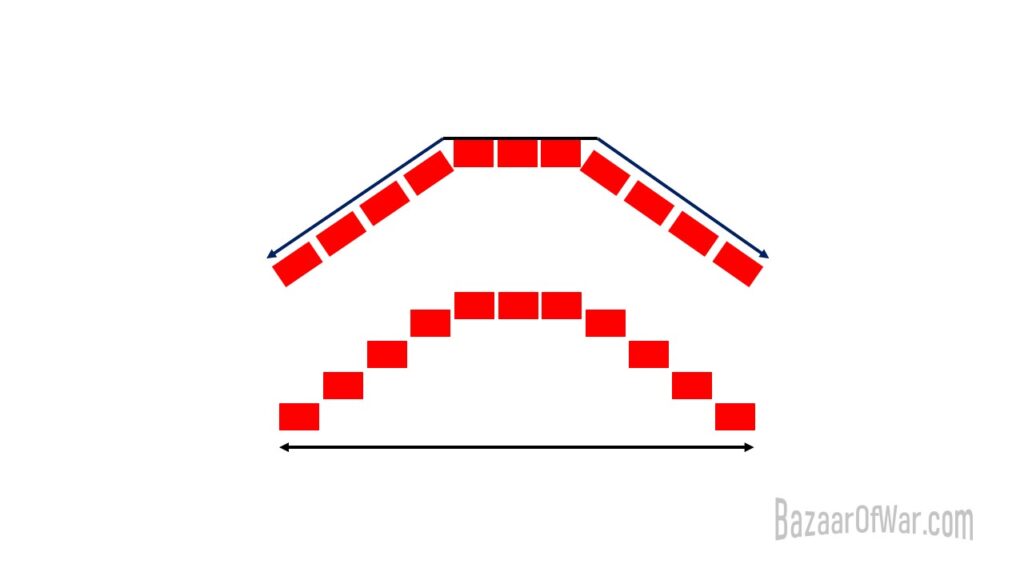
The battle begins with skirmishing by the light infantry on both sides. It is probably at this point that the Romans condense their lines, strengthening the center.
Why do this? The answer lies in the Romans’ perception during the opening phase of the battle.

The purpose of deploying skirmishers before a battle, other than to soften the enemy line, is to screen a friendly force, preventing the enemy from observing their formation. The Carthaginians employ slingers from the Balearic Islands, who whipped small, hard stones at the enemy line, forcing them to stay hunkered down beneath their shields. This, plus the dusty wind, makes it very hard for the Romans to tell what was going on.
All the Romans can see is the Punic center bulging out towards them. They can’t tell how many ranks deep it is, and probably figure that the center is heavily reinforced to smash through their own line. That is exactly what the outnumbered Thebans did at the Battle of Leuctra in 371 BC, when they famously defeated the hitherto invincible Spartans by heavily reinforcing their left and pushing it ahead to smash the Spartan right.
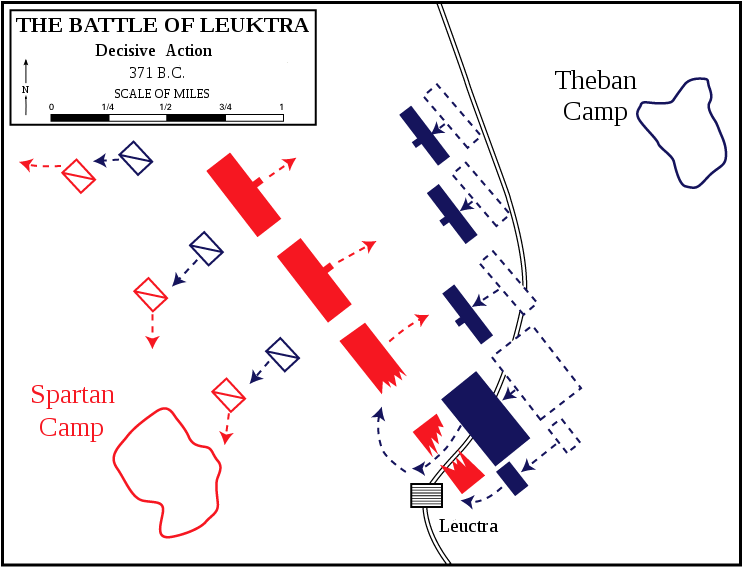
While all this is going on, Hannibal sends his Celtic cavalry on the left against the Roman right. These are crowded between the infantry and the river and lack room to maneuver. The Romans are soon routed by the better and more numerous Celts, who take off in pursuit.

By the time the cavalry fight is over, the Roman line is ready to advance. The whole formation moves forward as a mass, as the cavalry at the other end—Numidians on the Carthaginian right, allied cavalry on the Roman left—skirmish inconclusively.

What the Romans are not prepared for is the shape of the Carthaginian front. As the line advances and the inner maniples start making contact with the angled line, they naturally turn inward. The deeper-than-usual columns start jostling the maniples on their outer flank.

Those outer maniples also have to speed up and swing around to maintain alignment with their neighbors—in such a situation, the entire formation marches in alignment with their neighbor that is closer to the center. As the outer maniples run to catch up, they turn in at an even sharper angle.

This starts to disorder the densely-packed formations, but also does something more important: it molds the entire Roman line into a concave crescent of their own. Not something that would happen if facing a normal echeloned front.

The Carthaginian center is surrounded by this point, but Hannibal is prepared, having placing himself at the center to lead a planned retreat. As the crescent collapses under the inexorable pressure, he ensures the entire formation reverts to a line.

In truth, this is probably complete chaos. The Celtic and Iberian infantry are taking heavy casualties from the strong Roman push, and it takes all of Hannibal’s abilities to prevent the planned withdrawal from turning into a rout. The Roman, on the other hand, are already tightly packed and are converging on a single point. Even as the Carthaginians fall back onto a straight line, the Romans are prevented from changing course by the deep formations on either side.
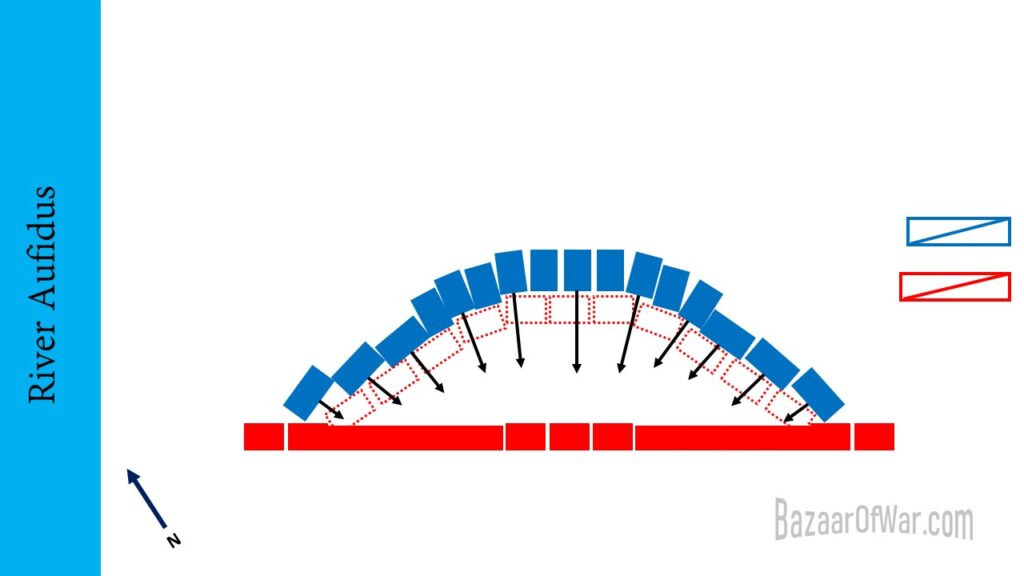
Not that it would make much difference if they could: they are faced with the earlier geometry problem. Whereas the thinner Carthaginian units can fall back on line without running into one another, the Romans have to cram their entire frontage into a much narrower space.

This fact is well known in the ancient world. Onasander’s Strategikos advises how to deal with a larger enemy arrayed in a concave formation: rather than march into the center, where the smaller force will get encircled, he recommends attacking the protruding flanks.

This way the smaller army can overpower the enemy flanks, but the enemy center cannot advance to help out without getting crowded together and losing formation.

This is essentially what is happening to the Romans. The centermost units, which had the most direct path and were the first to make contact with the enemy, continue to push the enemy center back.
That is when things start to go horribly wrong.
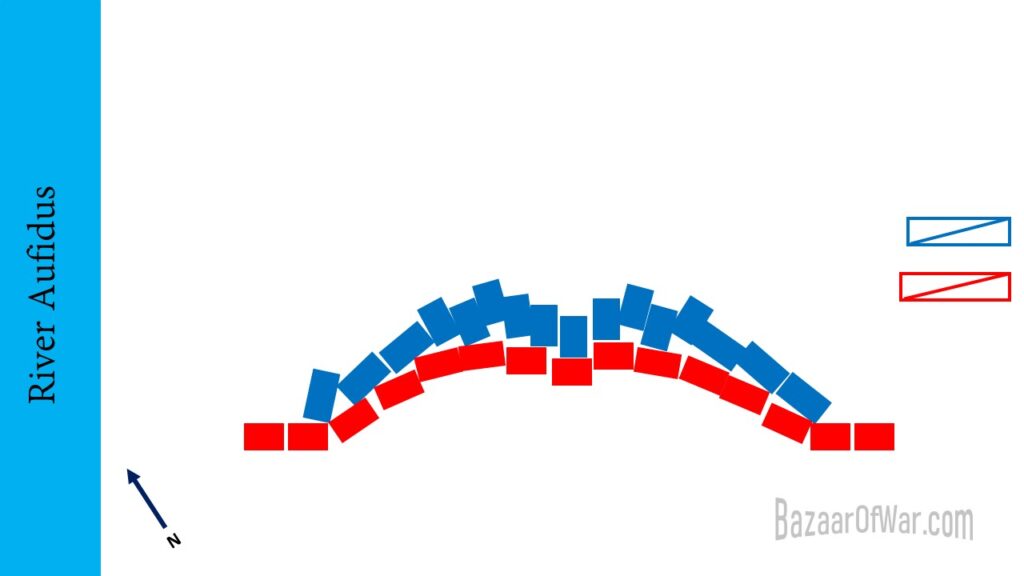
As the outer maniples converge from the wings, they start to run into the center units. They knock each other around and the men in the rear struggle just to stay upright. Without the support of these men behind them, the front ranks can’t maintain the forward pressure.

This allows the Carthaginian line to stabilize and reform. As this happens, the Libyans on the either end swing in and start attacking the Romans on their flanks.

It keeps getting worse for the Romans. A few individual units are able to maintain some cohesion and face out, but they keep getting pushed on all sides by their own men. These shocks ripples through the packed mass, disrupting lines and knocking men over. As the infantry gets squeezed tighter, the Celtic cavalry return from their pursuit of the Roman right and help the Numidians defeat the Roman left.
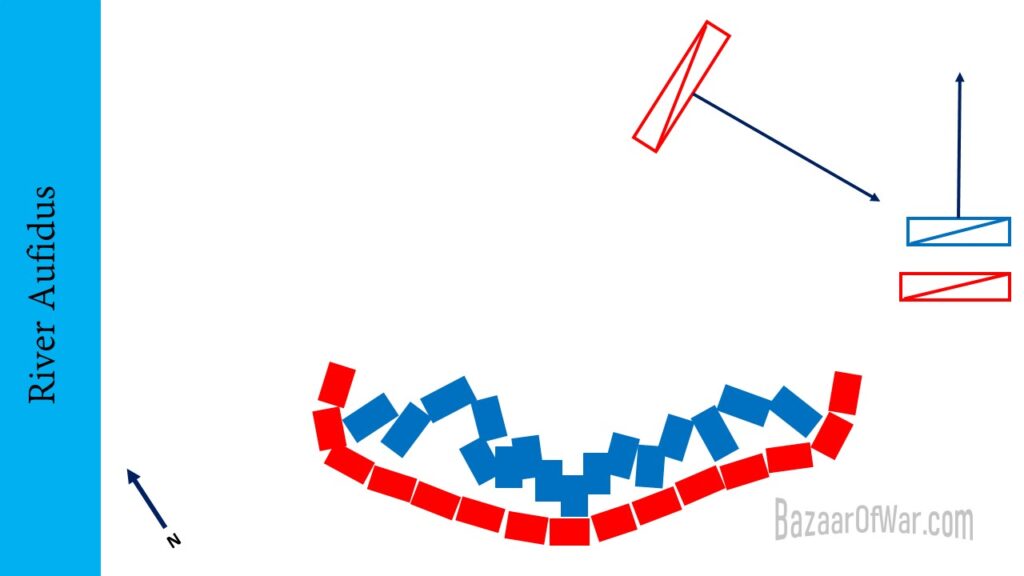
As the Numidians pursue, the Celts turn and attack the Romans from the rear. It is all but over now.
The rest of the day is a slaughter. Groups of several thousand men break out and escape, but most are eventually captured. Those remaining are killed to a man.
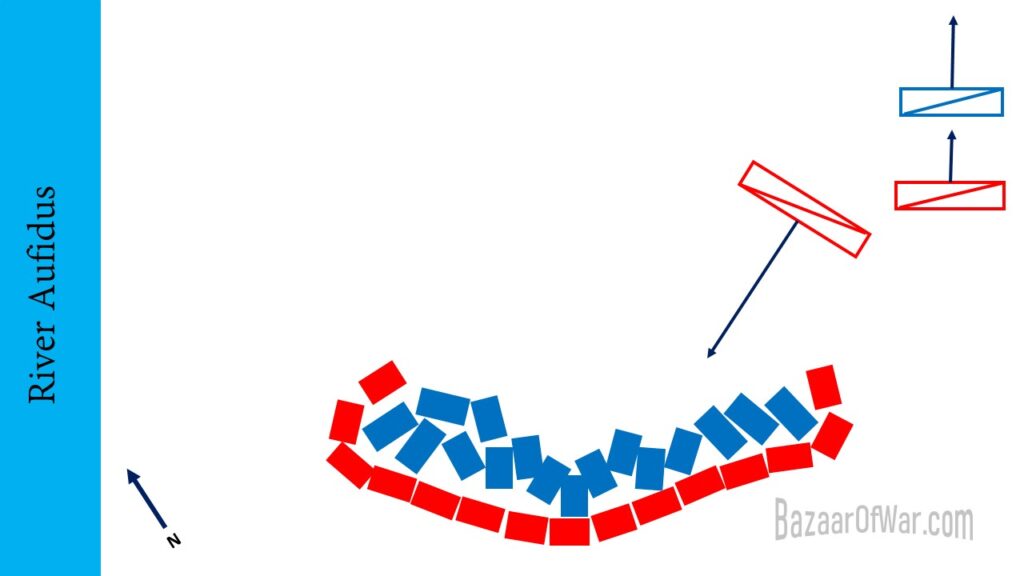
So why isn’t Cannae a victory by double envelopment?
A true envelopment uses a flank attack to disrupt the enemy formation. To do that, Hannibal would have to extend his line, and the Romans would have kept formation and smashed through his thin line. Hannibal did not win by encircling the Romans. He didn’t even win by attacking their flanks. He won by turning their army into a disordered mass. By the time the Libyans entered the fray, the battle was already won.
Far more brilliant than a mere double envelopment.
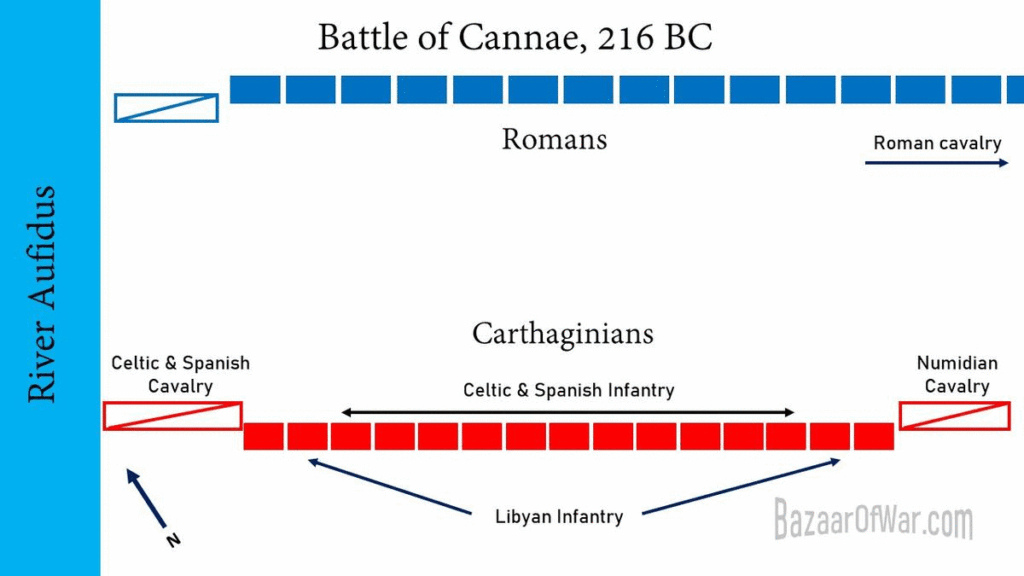
As a coda, what would have happened if Cannae didn’t go according to plan? What if the Romans didn’t draw in their center? There were probably other parts to Hannibal’s plan that went unmentioned because they never came into play—he did employ at least one additional stratagem, which consisted of sending 500 cavalry across enemy lines in false surrender; once the battle was engaged, they drew their hidden weapons and started attacking the Romans from the rear. We can guess what else he might have done.
As a first possibility, the battle might develop in a similar way, but the Romans don’t draw in their lines. The extended Roman front still wraps around the extended Carthaginian frontage and get crowded together as the crescent collapses.
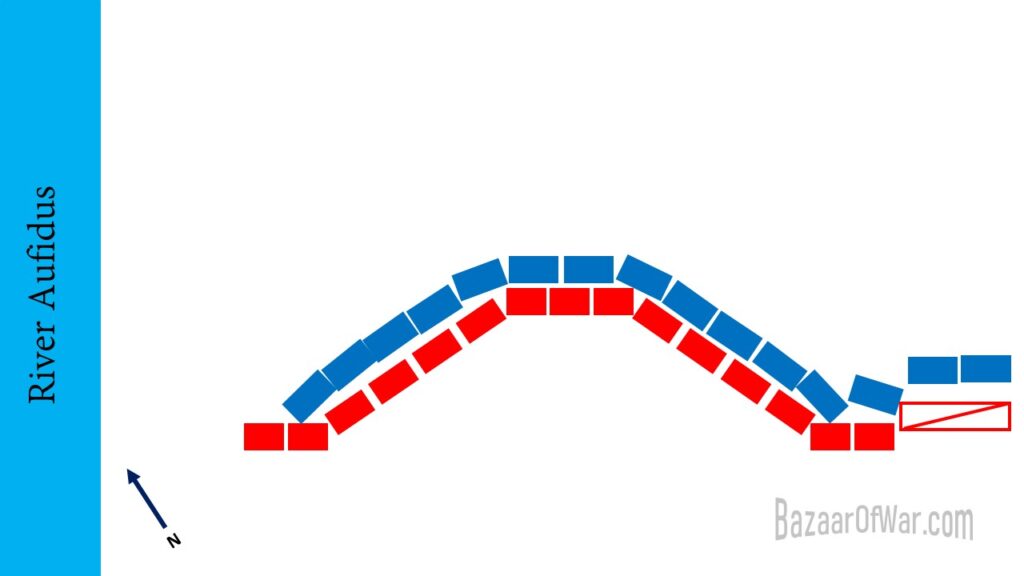
Because the Roman center has less impetus, the Carthaginians conduct a more orderly withdrawal and suffer fewer cavalry. Both wings of cavalry then attack the flank and rear of the Roman left to prevent an envelopment.
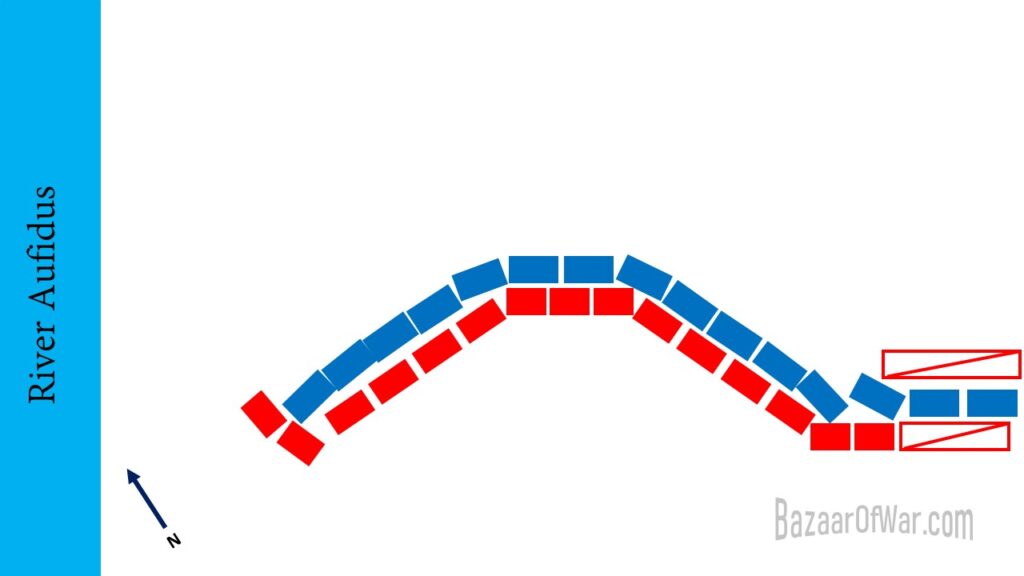
As a second possibility, Hannibal might indeed be hoping for a breakthrough in the center. His Celts in the center are his fiercest warriors, and stood the best chance at piercing the line.
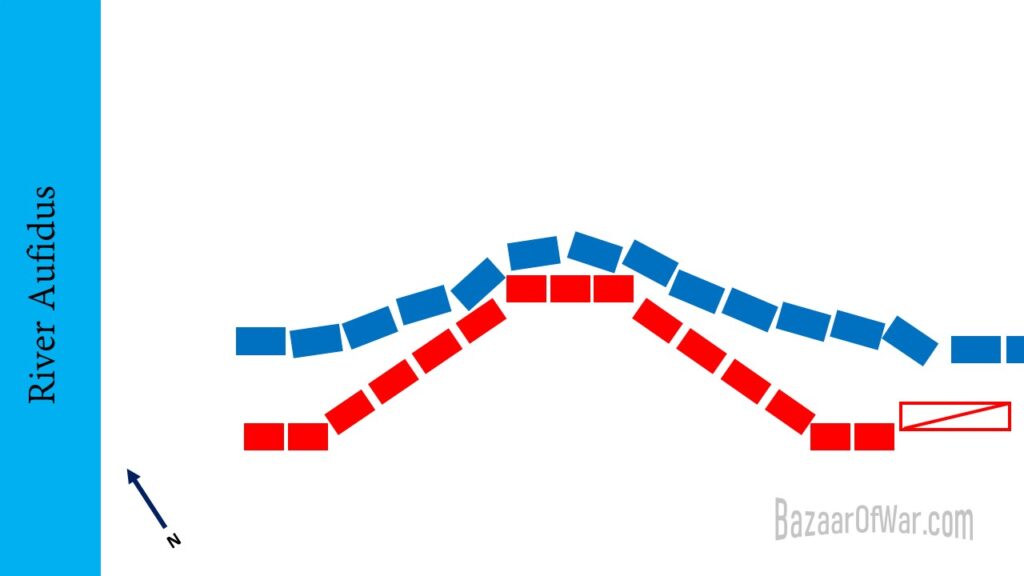
This would explain the rush to attack with the cavalry on the left: Hannibal needed them to punch through and attack the Roman rear at the exact point as his center. This would split the Roman line and allow them to be defeated in detail.
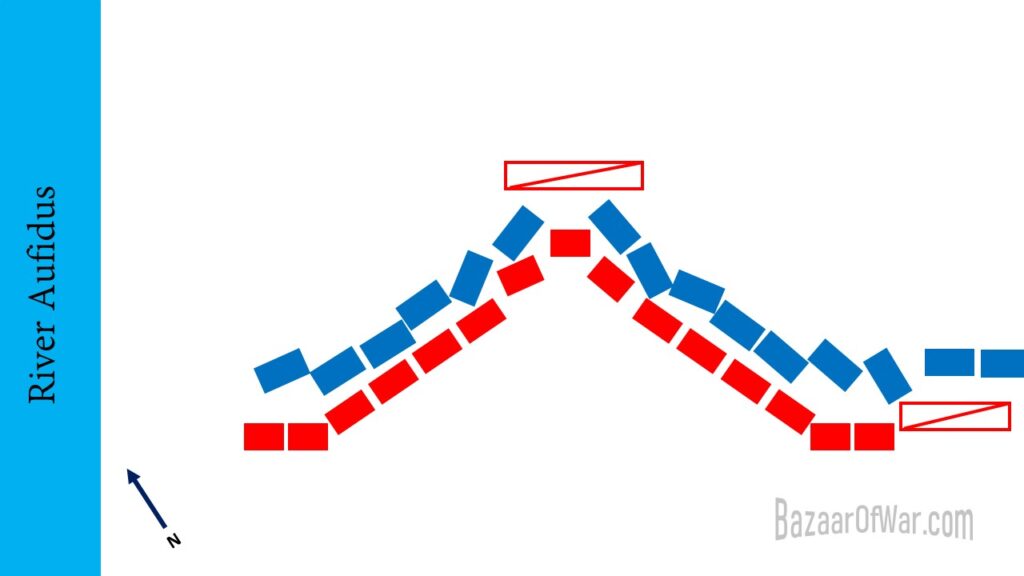
Whatever the case, Hannibal knew that Cannae would be a hard-fought battle. As tempting as it is to imagine him as a mastermind leading the enemy by the nose, he was in a tight spot and had twice failed to bring the Romans to battle on more favorable ground in the days leading up. And all of these scenarios depend on one critical factor: the absolute superiority of his excellent cavalry.
Although it is hard to imagine a more smashing victory than Cannae, Hannibal still lost over a tenth of his army—a heavy loss when he couldn’t easily recruit more. This prevented him from marching on Rome, and ultimately lost him the war. Which adds a final touch of irony: just thirty miles from Cannae is Asculum, where 63 years earlier Pyrrhus of Epirus won another great victory over the Romans, losing fewer men than Hannibal. This was the battle that gives us the term “pyrrhic victory”.


